Chimpanzee tracking in East Africa
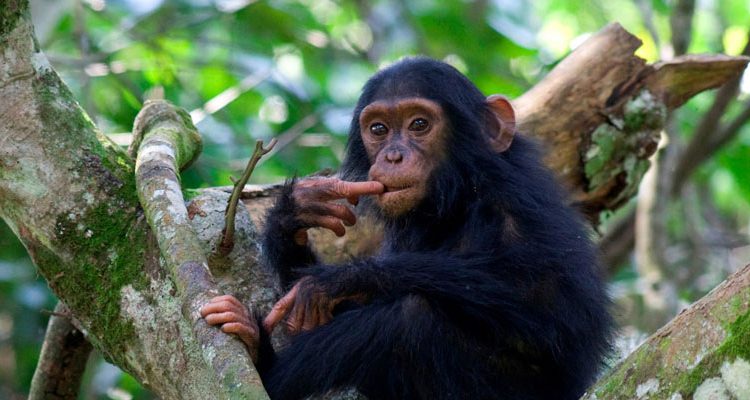
Chimpanzees live in rainforest and wet savannah across several countries in central and East Africa and Aardvark Safaris offers guests the opportunities to track these charismatic animals in Uganda, Tanzania and Rwanda.
Generally active during the day, chimpanzees spend much of their time on the forest floor foraging for food and looking for trees with ripe fruit. They can move fast through thick forest, and are aggressive and highly organised hunters as well as fruit and insect eaters. Vocal and noisy, they use a complicated system of sounds to communicate – hooting, screaming, grunting and drumming on trees as they move.
Tracking these astonishing athletes through the forest is a thrilling experience, and can be one of the most adrenaline charged of all wildlife encounters. You are likely to spend several hours moving swiftly with your guide trying to spot and catch up with a chimp family, and to observe their behaviour without disturbing them. It can take several hours to find then since they move so quickly and fluently through their home environment. It is not always easy but it is immensely rewarding.
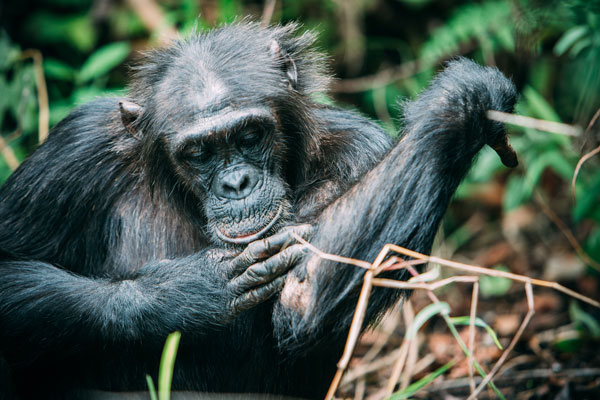
Chimpanzees have complex social structures and spend plenty of time grooming to bond
We recommend that clients have at least two opportunities to track these wonderful animals and can organise outings where you spend anywhere from a half day to more than 12 hours as part of a chimp habituation experience observing these charismatic characters go about their daily business in a way that seems all too familiar.
Where to track Africa’s chimpanzees
Uganda
Chimps in Uganda are found in Kibale National Park and Kyambura Gorge. The larger population is in Kibale where some 1,500 individuals have been recorded. It is here that, as well as daily tracking, visitors can join resident researchers in their chimpanzee habituation programme. It’s a fascinating way to gain an insight into the lives of the chimps in the park.
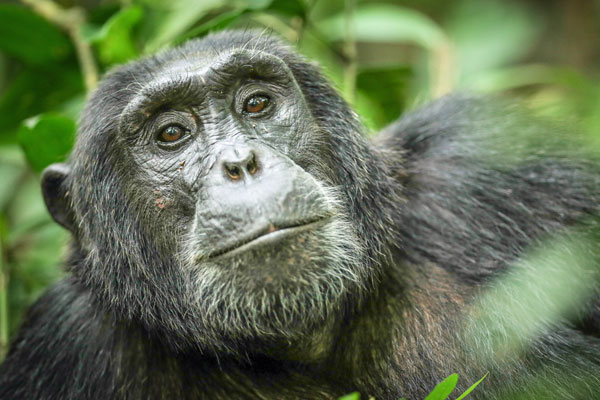
Chimpanzee at Kyambura, Uganda
From Ndali Lodge, treks head into the national park in the morning and afternoon, giving guests a better than average chance of finding the chimp families eating in the morning close to their nesting site or bedding down for the evening in the late afternoon.
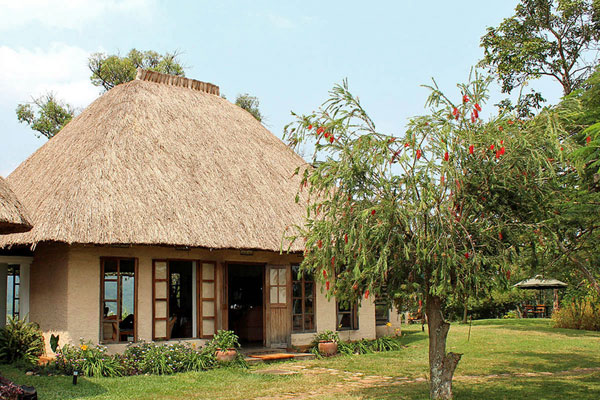
Ndali Lodge cottage, set in beautiful grounds, Uganda
Kyambura Gorge is a section of the Queen Elizabeth National Park and chimp tracking activities here can be combined with classic wildlife viewing in other areas of this famous park which supports a wide variety of species. The gorge itself is an extraordinary natural environment and forms a stark contrast to the surrounding grasslands. The chimp population is fairly mobile here and viewing can be unpredictable but the walk itself is enchanting.
Kyambura Gorge Lodge is a good base from which to explore the area and track the chimps.
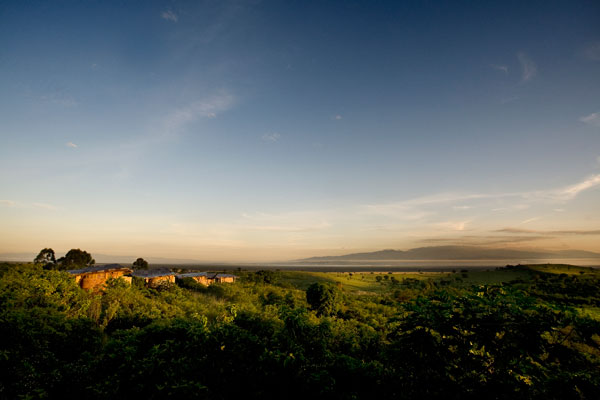
Panoramic views of Kyambura, Kyambura Gorge Lodge, Uganda
Chimp tracking is available to guests 15 years and over.
For real primate enthusiasts, chimp tracking in Uganda combines brilliantly with gorilla tracking in Bwindi Impenetrable Forest.
Tanzania
Tanzania’s chimps are found in two parks in the far west of the country and on an island in the south western corner of Lake Victoria. The largest population, some 1,000 or so, live in the remote Mahale Mountains and can be tracked from Greystoke Mahale Lodge on the shores of Lake Tanganyika. Spend an hour with the chimpanzees at Mahale and you’re likely to see the subtleties of family relationships, to watch the youngsters practising their climbing skills and even wonder which of the adolescents might be plotting a coup. They are a fast moving group and it can take up to a couple of hours tracking in the forest before finding them, but following the sounds and signs of the group ahead while you walk is all part of the experience.
Guests of 12 and over can track the chimps in Mahale.
Seeing the chimps in the Mahale Mountains combines easily with a traditional big game safari in Tanzania’s Selous, Chada Katavi, Ruaha and the Serengeti National Park.
Rubondo Island’s chimpanzees were introduced in the mid-1960s when Professor Bernhard Grizimek of the Frankfurt Zoological Society established the island as a haven for endangered species. Over the four year period he released 16 chimps, freed from European zoos, onto the island.
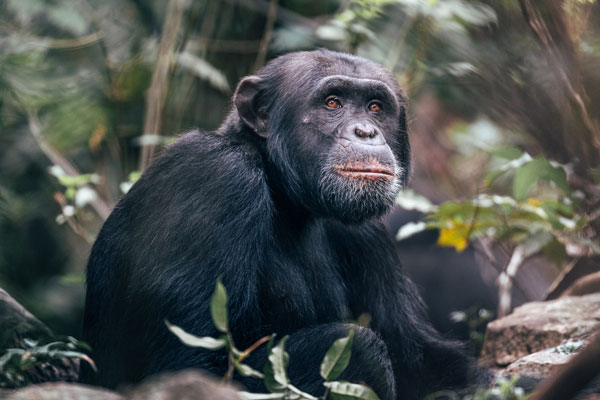
Rubondo Island chimpanzee, Tanzania
There are now around 35 individuals living on Rubondo Island and with the habituation process well under way guests staying here can enjoy many sightings while on walks through the forest.
Chimp sightings are good year round here, although it’s best to avoid the April and May rainy season when the frequent thunder storms can scare the chimps making them trickier to spot. Best time of day is from 11am to 2pm when the chips have eaten and settle down to start grooming and playing.
Guests participating in the chimpanzee experience need to be 16 years and older, but forest walks are available to visitors 12 years and older.
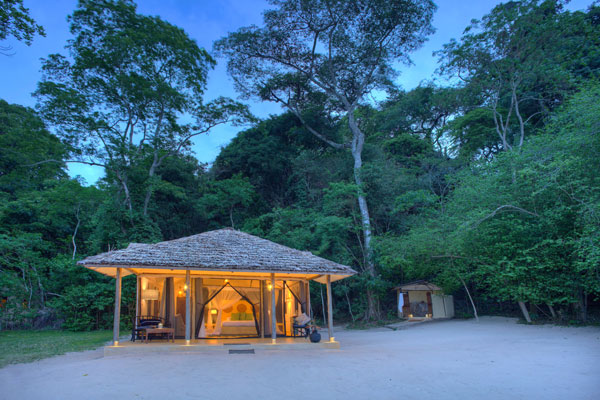
Rubondo Island, Tanzania
Rwanda
Nyungwe National Park, a vast area of mountain rainforest in southwest Rwanda, is home to chimpanzees, several species of monkey and an abundant array of birdlife. Of the 500 chimps in the park, around 100 are used to human contact and it’s these habituated groups that visitors can track here.
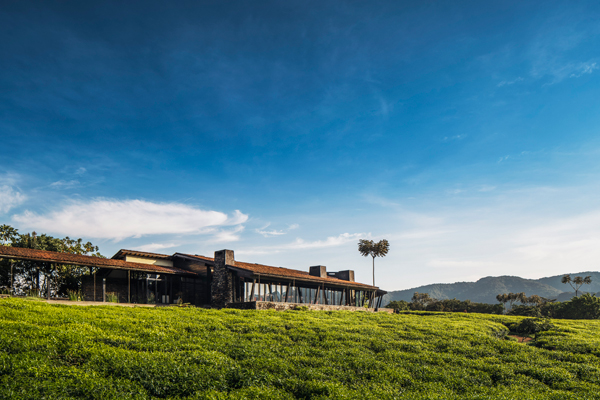
Nyungwe Lodge, Uganda
As the chimps are most active in the morning, an early rise is required for the best viewing opportunities. Visitors seeking a luxury experience will enjoy One & Only Nyungwe Lodge, where a delicious breakfast is pre-prepared and eaten ‘on the go’ as experienced trackers guide groups deep into the forest. The terrain can be steep, slippery and muddy in some places so moderate levels of fitness are recommended.
Tracking is available to guests 15 years and over and in a maximum group size of eight.
Tracking chimps in Rwanda combines very well with gorilla tracking in the Volcanoes National Park.
Any questions on a chimpanzee tracking safari in Africa?
If you’ve got this far and not found an answer to a question you have that we should have included, please ask in the comments section below, or pop us an email. We’ll be sure to reply and may amend the article to include our answer.
What next?
We would be delighted to help you plan a holiday, or answer any questions about visiting gorillas or other primate safaris. Our team of experts have travelled widely throughout Africa. They can offer expert advice on every type of safari from gorillas and chimpanzees to lemurs and other primate safaris. If you would like to talk to someone who has been there and done it, please just send us an email or give us a call.
Leave a Reply